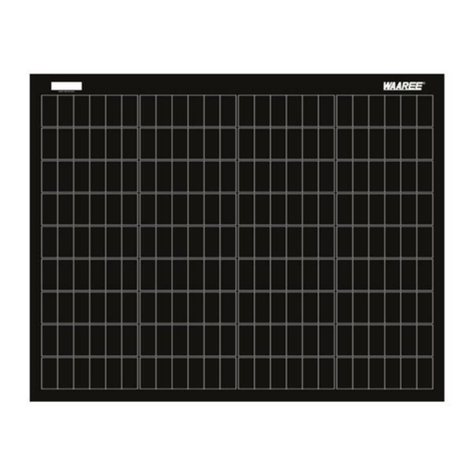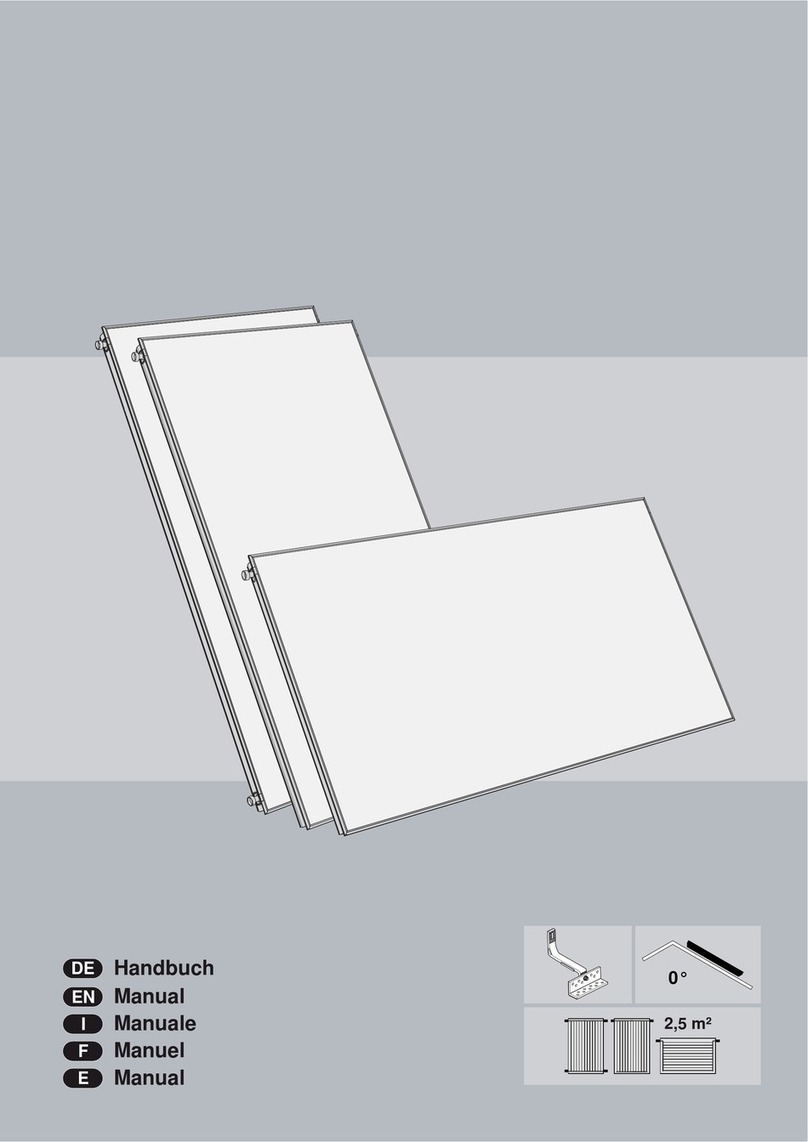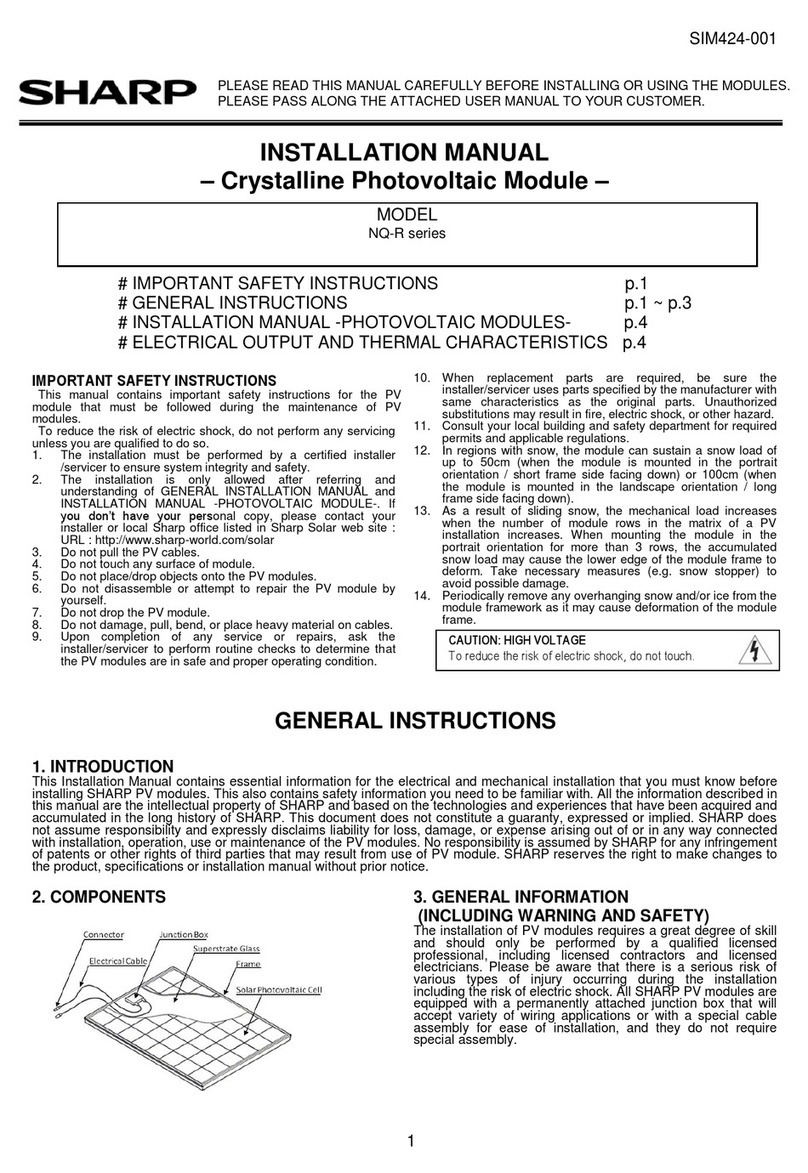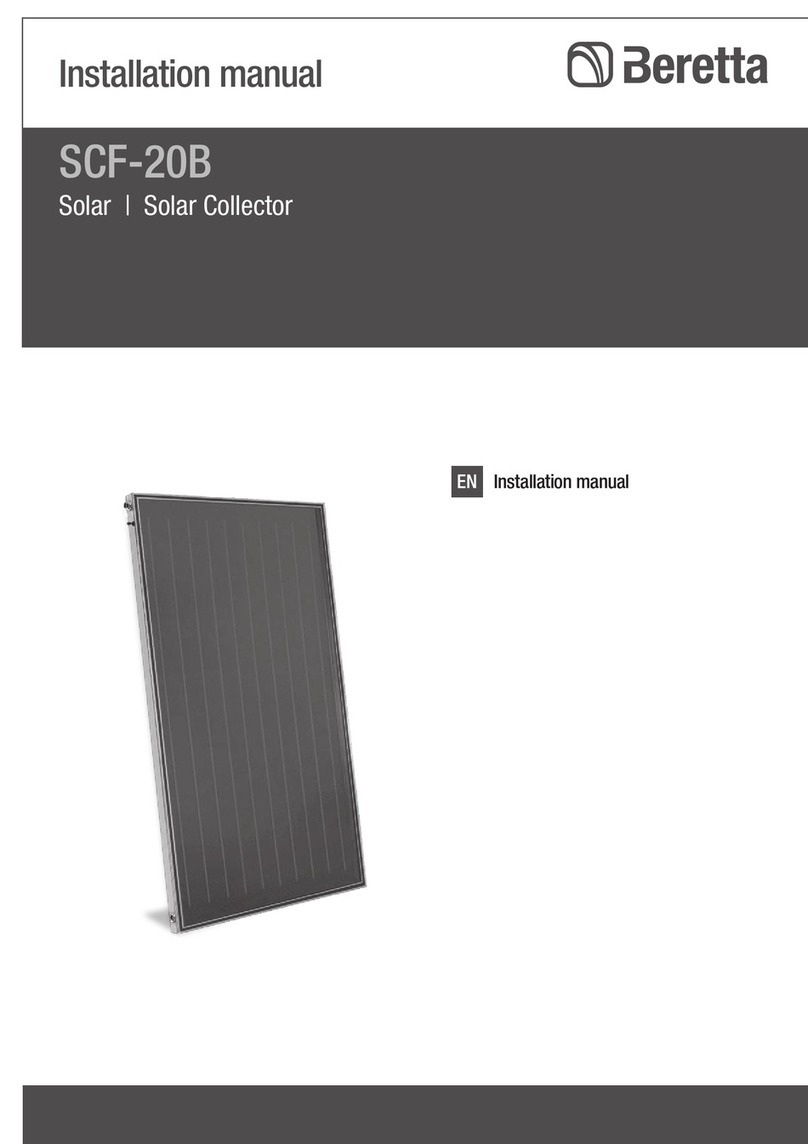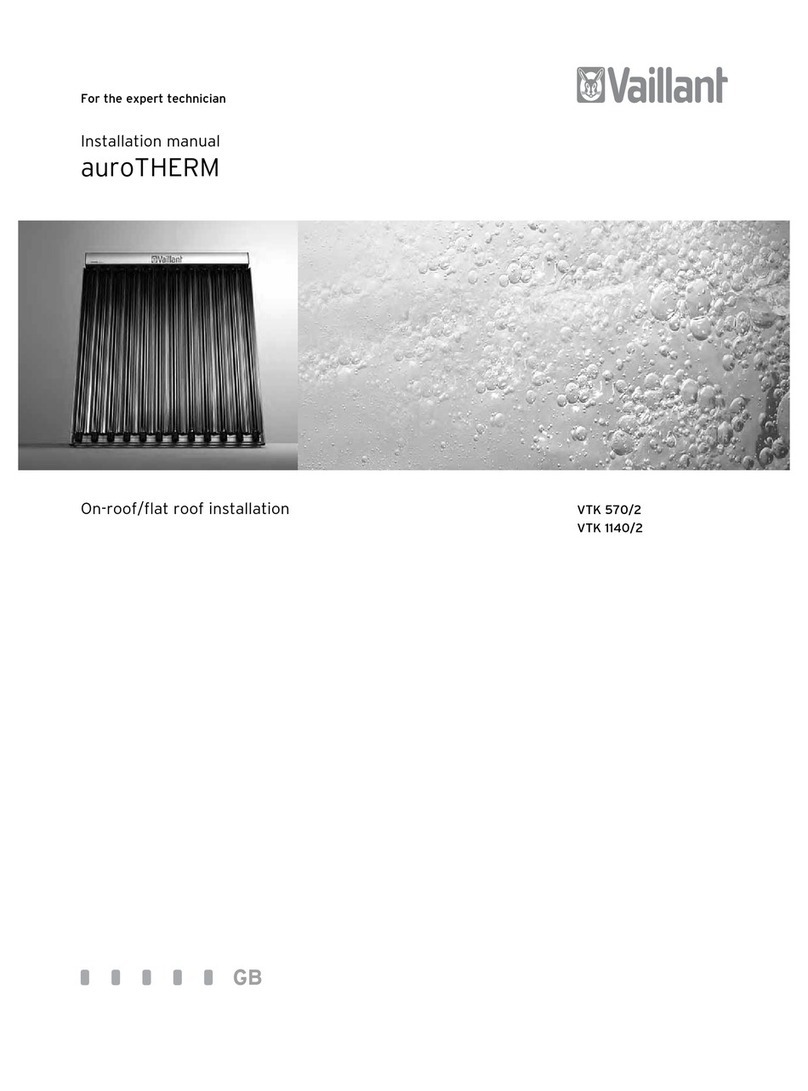Coast to Coast TPS-555 User manual

Instruction Manual
The TPS-555 Solar Charge Regulator is designed to control the charging from the solar panel/s into the
battery, and the power draw from the battery to the loads.
Feature
TPS555 Solar Charge Regulator is able to handle charge and discharge from a 12V battery bank.
It provides over-charging, over-discharging, and over-load protection. Therefore keeping the whole
solar system at a proper working condition.
PWM (pulse width modulation) charging circuit is used for higher efficiency
Big LCD display for easy monitoring
Technical data
Item
TPS-555 12V
Max. Solar Input current
30A
Max. load current
30A
Rated Output Voltage
DC12V
Over charge voltage
14.5V±0.4V
Over discharge protection
10.7V±0.4V
No load loss
<25mA
Control method
PWM charging
Operating temperature
(-25℃-40℃)
Open circuit voltage of panel
28Vmax
Low voltage reconnection
12.0±0.4V
How to connect the charge controller

1. Choose multi-strand insulated copper wire not less than Φ6mm2, bare strip 5mm at the end for
connection to the charge regulator. Make sure that the connection is secure and tight to reduce any
power loss.
2. Battery should be connected to the port where shows “” Please note that “+” stands for
positive pole, and “-” stands for negative pole. Make sure you connect with correct polarity.
3. DC load should be connected to the port where shows “ ” Please note that “+” stands for
positive pole, and “-” stands for negative pole. Make sure you connect with correct polarity
4. Solar panel should be connected to the port where shows “ ” Please note that “+” stands for
positive pole, and “-” stands for negative pole. Make sure you connect with correct polarity.
5. Finally, please make sure that all the connections are secure and correct.
How to disconnect and connect the charge controller
When connecting or disconnecting the charge controller, please follow the sequence below
Disconnecting
1. First disconnect the positive and negative of solar panel.
2. Turn off the load on/off switch, then disconnect load.
3. At last, disconnect the positive and negative of the battery, do not disconnect battery before
disconnecting the solar panel.
Display Shift Button
Load on/off switch
Solar panel +
Solar panel-
Battery +
Battery -
DC Load +
DC Load -

Connecting
1. First connect battery wires
2. Then connect solar panel wires
3. Finally, connect load (if any)
In order to ensure correct operation of the controller, the above order MUST be followed.
How to use the controller
The Display Shift Button works in a cycle pattern. By pressing the button, the LCD will switch in
between the three different modes as shown below.
Display Shift Button “▲”
“ ” Load on/off switch
Mode 1:When you press “▲” button, the
LCD screen shows the working voltage of the
battery, following is an example:
When the load“ ”button is used in this
mode, it will not change what is being
displayed on the LCD.
Mode 2:when you press “▲” again, the LCD
Screen shows the output current from battery to
the load.
Following as an example:
When the load“ ”button is used in this
mode.
1. When the load output is under ON status,
LCD will show output current from
battery to load.
2. When the load output is under OFF status,
LCD will show 00.0A.
3. If over discharge protection is activated,
Battery voltage
Output current to load Solar charge current
Battery voltageBattery voltage
Output current to loadOutput current to load Solar charge currentSolar charge current

the load output will be cut off. If you press
“”under such status, it is invalid and
buzzer alarm will sound.
4. When battery voltage is restored from
over-discharge or over load protection,
press “ ” twice to reactivate the load
output function.
Mode 3:when you press “▲” again, the LCD
Screen shows the charging current from the
solar panel to the battery. Following as an
example:
When press “ ” button in this mode, it
will not change what is being displayed on
the LCD screen.
Warning and Notice.
1. When designing or installing the solar system, please make sure that the voltage of battery (12VDC)
and the voltage of the solar panel/s are matching. The maximum power input from the solar panels that
can be used for the TPS-555 12V should be less than 360W
2. Please do not touch or short the bare strip lead wire of the solar panel to prevent electric shock.
3. Please cover the surface of the solar panel/s during the installation process to prevent electric shock.
4. The charge controller is NOT of a waterproof design, keep away from rain, and water.
5. The charge controller is working with high power outputs, please do not touch the surface when it is
working. Place the charge controller in a cool and well ventilated position and avoid direct sunshine,
mounting in hot areas (kitchen area), dust and moisture.
Trouble Shooting:
1. No Output
Check if the load is connected correctly
Current draw is within the Maximum output current limit.
Battery Voltage is not low.
2. Can not charge
Check if the connection of solar panel & battery to the controller is secure.
Check Battery

IMPORTED & DISTRIBUTED BY:
1300 COASTRV
(1300 262 7878)
www.coastrv.com.au
VICTORIA
Coast to Coast RV Services
3 Frog Court
Craigieburn VIC 3064
e: salesvic@coastrv.com.au
NEW SOUTH WALES
(HEAD OFFICE)
Coast to Coast RV Services
20 George Young Street
Auburn NSW 2144
e: salesnsw@coastrv.com.au
Calls from outside Australia +61 2 9645 7600
Technical Support: technical@coastrv.com.au
QUEENSLAND
Coast to Coast RV Services
Unit 3&4 No.33-43 Meakin Road
Meadowbrook QLD 4131
e: salesqld@coastrv.com.au
WESTERN AUSTRALIA
Coast to Coast RV Services
Unit 1 No.45 Tacoma Circuit
Canning Vale WA 6155
e: saleswa@coastrv.com.au
Popular Solar Panel manuals by other brands

Lake Lite
Lake Lite LL-SP-10W quick start guide
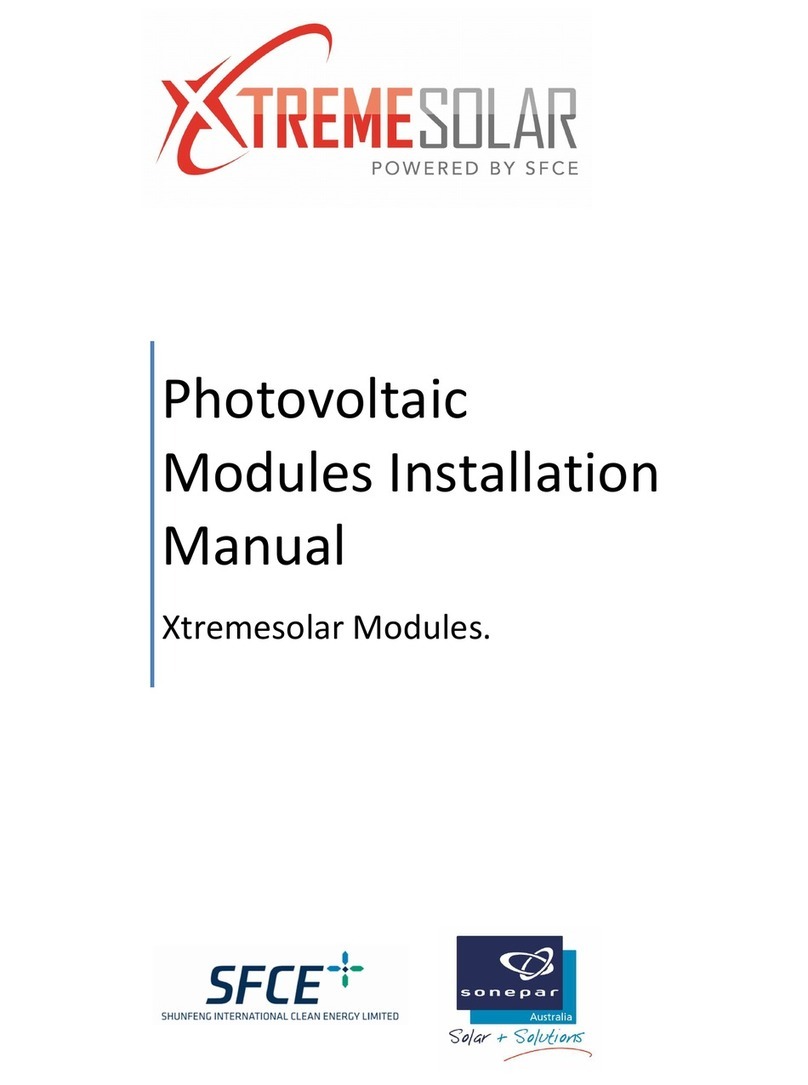
SFC Energy
SFC Energy XTREMESOLAR XTR-S290P Series installation manual
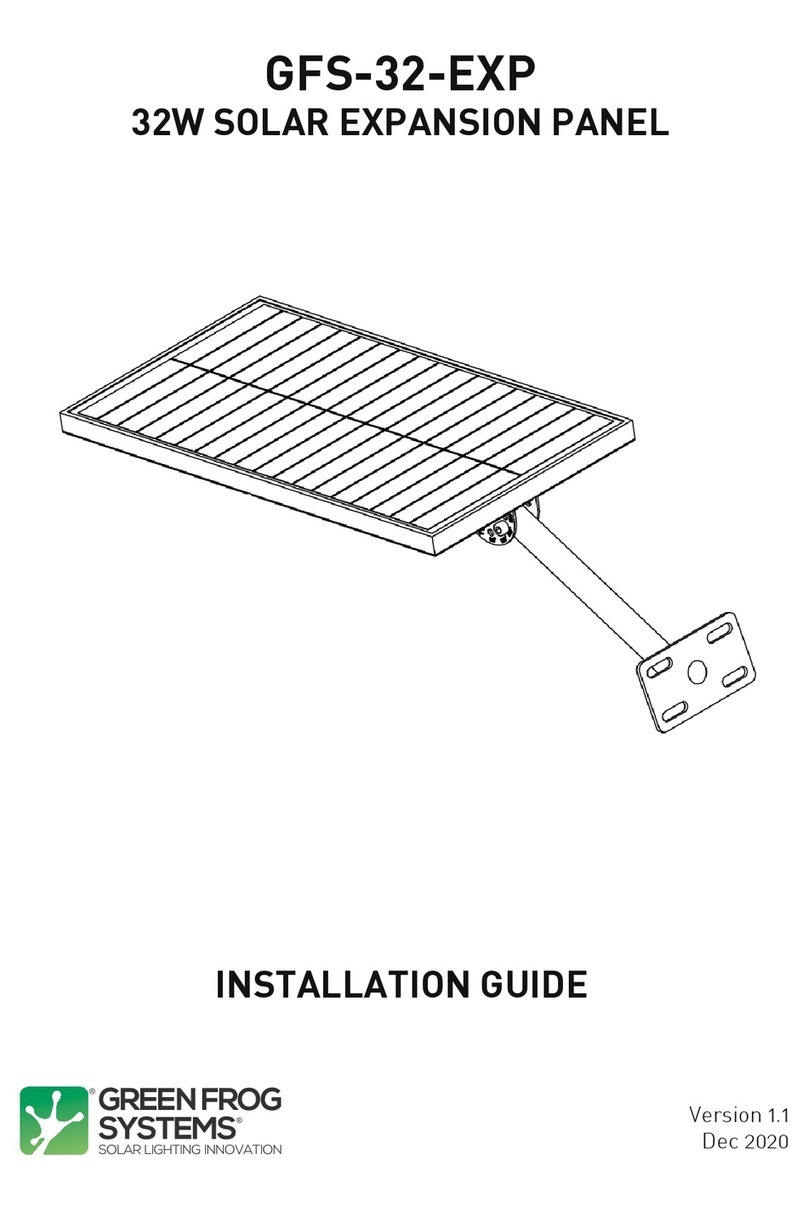
GREEN FROG SYSTEMS
GREEN FROG SYSTEMS GFS-32-EXP installation guide
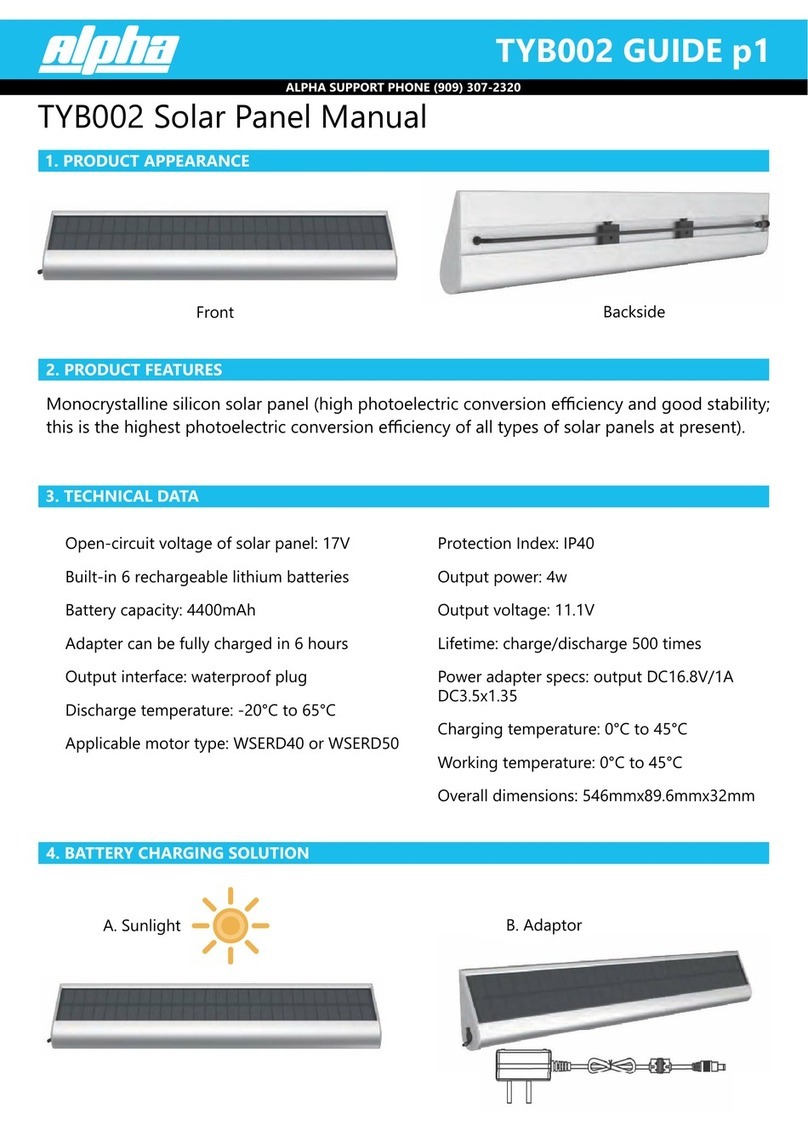
Alpha
Alpha TYB002 manual

Wasserstein
Wasserstein Solar Panel for Wyze Cam Outdoor user manual
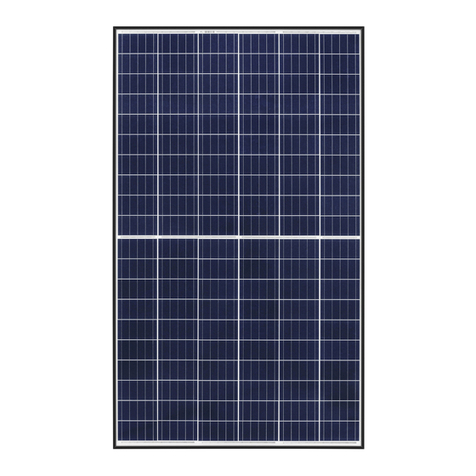
REC
REC TwinPeak 2S Mono 72 Series installation manual

Dometic
Dometic PS120A Installation and operating manual

RM Solar
RM Solar S Class 20 Pro instruction manual

Viessmann
Viessmann Vitosol 100-FM Technical guide

Siliken
Siliken Atakama ATK-P60 Instructions for use

Viessmann
Viessmann Vitosol 300-TM Installation information
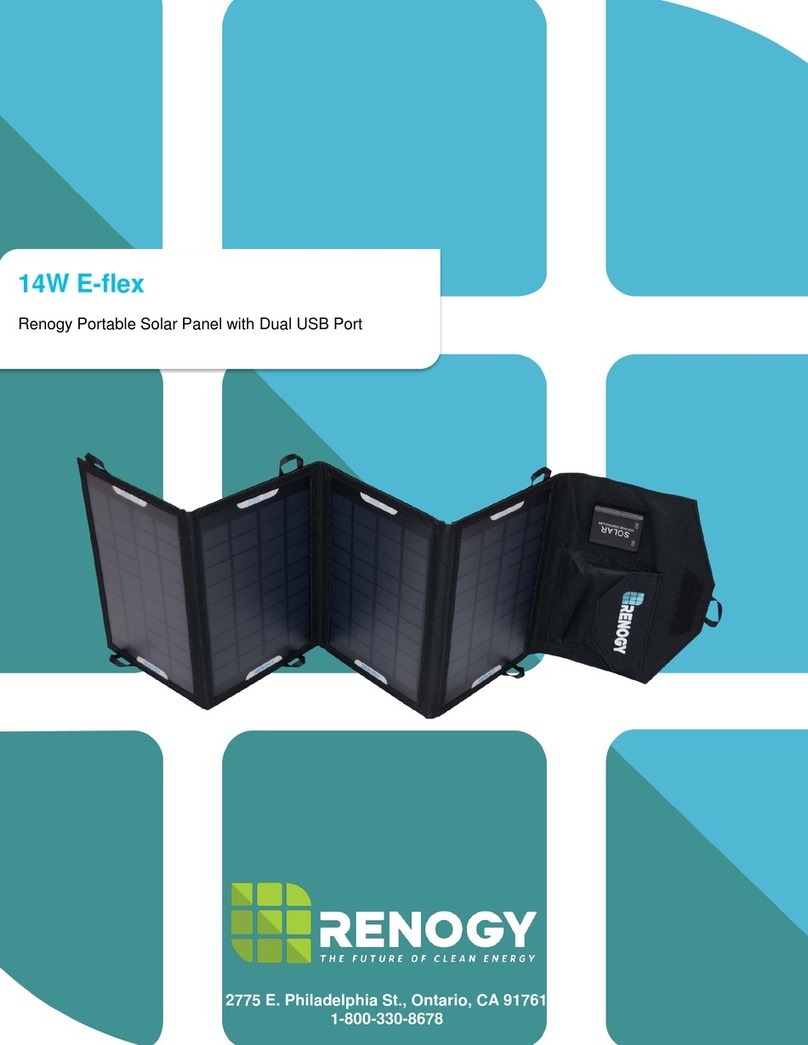
Renogy
Renogy E-flex 14W quick start guide
